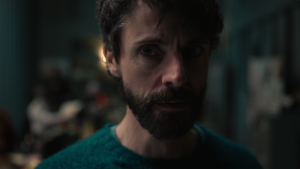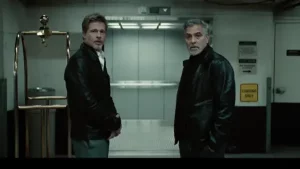
Peaky Blinders caught the imagination by swerving the unexpected. Creator Steven Knight put the whole thing on a tilt from the start by not setting his gangster drama in London, but in (then) unfashionable Birmingham. He made family leader Tommy Shelby not the eldest but the middle brother. He mad Helen McCrory’s indelible Polly Gray not Tommy’s mother but his aunt. His working class characters weren’t to be pitied, but feared and respected… Nothing, from the contemporary rock music to the interweaving of Romany culture, was quite what period audiences had come to expect.
Knight’s slanted take on historical drama was exemplified at the climax of the Peaky Blinders series one finale, directed by Tom Harper (The Aeronauts, War & Peace). Now, over a decade later, Harper is coming back to direct the long-discussed Peaky Blinders movie, which starts filming in September 2024 in the West Midlands, after being officially commissioned by Netflix and confirmed to star Oppenheimer Oscar-winner Cillian Murphy as Tommy Shelby.
In the Harper-directed 2013 series one finale, the Peaky Blinders gather in the lane outside The Garrison Tavern to face racecourse bookie Billy Kimber (Charlie Creed-Miles) and his men. It’s the climax of a series-long rivalry between the two gangs, and bullets are expected to fly – especially after Tommy unveils the Lewis machine gun wielded by his brother-in-law Freddie Thorne (Iddo Goldberg).
Just as the soldiers raise their weapons and prepare to fire, a voice is heard calling “Move”, and the battalion splits apart as Sophie Rundle’s Ada Thorne – Tommy’s sister and Freddie’s wife – dressed in widow’s weeds and pushing a pram containing her and Freddie’s crying baby stands between the two gangs. She tells the men to shut up and listen. Most of them had fought in France and so knew the slaughter and bloodshed that would come next. Ada tells them to look at her, wearing black for her soon-to-be-dead brothers and husband, and think of the people who’ll wear black for them. “Fight if you want to,” she concludes, “but that baby ain’t moving anywhere and neither am I.”
It’s an unforgettable, unexpected, earnest yet very slightly comedic and ultimately ballsy moment, which makes it very Peaky Blinders. It only came about, according to this BBC podcast interview with the show’s producer Jamie Glazebrook, due to BBC budget constraints. Glazebrook explained:
“There was going to be a huge gunfight and we just didn’t think we were going to be able to achieve it. Rather than do things in a half-arsed way, it’s better to do fewer things really well than to do lots of stuff badly, so we said to Steve [Knight] we don’t think we can have a huge gunfight, and then he came up with that amazing image of Ada coming out dressed in black with the pram, which I think is much better. It’s such an incredible image. It ties Ada in, and it gets me every time.”
Bullets do eventually fly in that scene – three of them. One grazes Tommy, another kills his loyal brother in arms Danny “Whizzbang”, and a final bullet, shot by Tommy, goes straight between the eyes of Billy Kimber (giving the TV version of the real-life gangster a more eventful death than his actual one in a Torquay nursing home 25 years later). Tom Harper’s presentation of Ada, the pram and her speech though, were much more memorable than any slow-motion explosion or balletic gunshot could ever have been.
The Netflix-financed Peaky Blinders movie will have a much bigger budget than the BBC series, Steven Knight told NME earlier this year. Its WWII setting will need one if it’s to deliver on the action front. Fingers crossed though, that the fuller coffers don’t make the Peaky Blinders movie forget the ingenuity and talent for dodging the expected that made the TV series stand apart.
The Peaky Blinders movie is due to start production in September 2024.
The post The Peaky Blinders Movie Director Gave Us One of Its Most Unforgettable Moments appeared first on Den of Geek.




